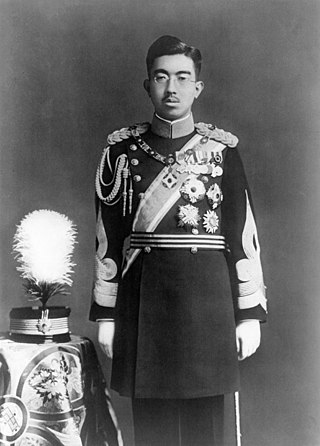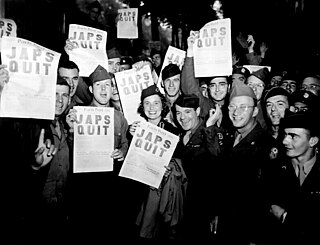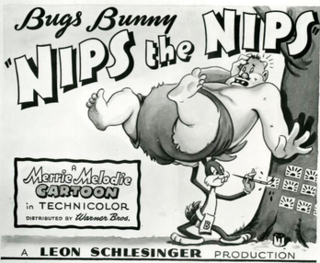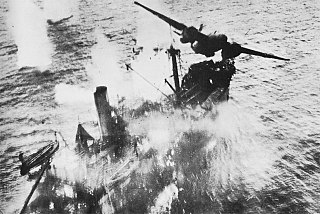
Nip is an ethnic slur against people of Japanese descent and origin. [1] The word Nip is an abbreviation from Nippon (日本), the Japanese name for Japan. [1] [2]

Nip is an ethnic slur against people of Japanese descent and origin. [1] The word Nip is an abbreviation from Nippon (日本), the Japanese name for Japan. [1] [2]
The earliest recorded occurrence of the English slur seems to be in the Time magazine of 5 January 1942 where "three Nip pilots" was mentioned. [2] [3] The American, British, and Australian entry of the Pacific Ocean theatre of World War II heightened the use of racial slurs against the Japanese, such as Jap and Nip. [2] The word Nip became a frequently-used slang word amongst the British Armed Forces. [2] The 1942 Royal Air Force journal made numerous references to the Japanese as Nips, even making puns such as "there's a nip in the air". [2] This phrase was later re-used for Hirohito's visit to the UK in 1971 by the satirical magazine Private Eye . [4]
As part of American wartime propaganda, caricatures and slurs (including Nip) against the Japanese diffused into entertainment, [5] [6] such as exemplified by the Warner Bros. cartoon Bugs Bunny Nips the Nips (1944). [6] In General Kenney Reports: A Personal History of the Pacific War (1949), George Kenney made racial statements about the Japanese, remarking for example that "Nips are just vermin to be exterminated". [7]
In a manner to evoke further anti-Japanese agitation, a Seattle Star editorial titled "It's Time to do Some Thinking On Nips' Return" from December 14, 1944, discussed the citizenship rights of Japanese-Americans and framed their return to American society as a problem. [8]
On 16 November 2018, the abbreviation for the Conference on Neural Information Processing Systems was changed from NIPS to NeurIPS in large part due to its perceived connotation with the slur. [9]

Hirohito, posthumously honored as Emperor Shōwa, was the 124th emperor of Japan according to the traditional order of succession, reigning from 1926 until his death in 1989. He was one of the longest-reigning monarchs in the world, with his reign of 62 years being the longest of any Japanese emperor.

Japan was occupied and administered by the Allies of World War II from the surrender of the Empire of Japan on September 2, 1945, at the war's end until the Treaty of San Francisco took effect on April 28, 1952. The occupation, led by the American military with support from the British Commonwealth and under the supervision of the Far Eastern Commission, involved a total of nearly one million Allied soldiers. The occupation was overseen by the US General Douglas MacArthur, who was appointed Supreme Commander for the Allied Powers by the US President Harry S. Truman; MacArthur was succeeded as supreme commander by General Matthew Ridgway in 1951. Unlike in the occupations of Germany and Austria, the Soviet Union had little to no influence in Japan, declining to participate because it did not want to place Soviet troops under MacArthur's direct command.

Jap is an English abbreviation of the word "Japanese". In some places, it is simply a contraction of the word and does not carry negative connotations, whereas in some other contexts it can be considered a slur.

The Fifth Air Force is a numbered air force of the United States Air Force Pacific Air Forces (PACAF). It is headquartered at Yokota Air Base, Japan. It is the U.S. Air Force's oldest continuously serving Numbered Air Force. The organization has provided 80 years of continuous air power to the Pacific since its establishment in September 1941.

Anti-Japanese sentiment, a form of racism against Asians, involves the hatred or fear of anything which is Japanese, be it its culture or its people.

The Battle of the Bismarck Sea took place in the South West Pacific Area (SWPA) during World War II when aircraft of the U.S. Fifth Air Force and the Royal Australian Air Force (RAAF) attacked a Japanese convoy carrying troops to Lae, New Guinea. Most of the Japanese task force was destroyed, and Japanese troop losses were heavy.

The Aleutian Islands campaign was a military campaign fought between 3 June 1942 and 15 August 1943 on and around the Aleutian Islands in the American Theater of World War II during the Pacific War. It was the only military campaign of World War II fought on North American soil.

Bugs Bunny Nips the Nips is a 1944 Merrie Melodies cartoon directed by Friz Freleng. The cartoon, released on April 22, 1944, features Bugs Bunny. The film depicts Bugs fighting against the Imperial Japanese Army in the Pacific War. The film is considered controversial for caricaturing the Japanese enemy, and expressing anti-Japanese sentiment.

South West Pacific Area (SWPA) was the name given to the Allied supreme military command in the South West Pacific Theatre of World War II. It was one of four major Allied commands in the Pacific War. SWPA included the Philippines, Borneo, the Dutch East Indies, East Timor, Australia, the Territories of Papua and New Guinea, and the western part of the Solomon Islands. It primarily consisted of United States and Australian forces, although Dutch, Filipino, British, and other Allied forces also served in the SWPA.

Hajime Sugiyama was a Japanese field marshal and one of Japan's military leaders for most of the Second World War.

George Churchill Kenney was a United States Army general during World War II. He is best known as the commander of the Allied Air Forces in the Southwest Pacific Area (SWPA), a position he held between August 1942 and 1945.

Skip bombing was a low-level bombing technique independently developed by several of the combatant nations in World War II, notably Italy, Australia, Britain, Soviet Union and the United States. It allows an aircraft to attack shipping by skipping the bomb across the water like a stone. Dropped at very low altitudes, the bomb never rises more than about 5 metres (16 ft) above the surface of the water, ensuring that it will hit the side of the ship as long as it is aimed correctly.

Air Vice Marshal William Dowling Bostock, was a senior commander in the Royal Australian Air Force (RAAF). During World War II he led RAAF Command, the Air Force's main operational formation, with responsibility for the defence of Australia and air offensives against Japanese targets in the South West Pacific Area. His achievements in the role earned him the Distinguished Service Order and the American Medal of Freedom. General Douglas MacArthur described him as "one of the world's most successful airmen".

Herman John Bottcher was an American soldier born in Germany, who was awarded the rank of captain in two different armies, the International Brigade during the Spanish Civil War and the United States Army during World War II. He was awarded two U.S. Distinguished Service Crosses, the highest U.S. military decoration after the Medal of Honor, for conspicuous bravery and leadership on the field of battle during two separate actions at the Battle of Buna–Gona.

Propaganda for Japanese-American internment is a form of propaganda created between 1941 and 1944 within the United States that focused on the relocation of Japanese Americans from the West Coast to internment camps during World War II. Several types of media were used to reach the American people such as motion pictures and newspaper articles. The significance of this propaganda was to project the relocation of Japanese Americans as matter of national security.

During World War II, some members of the United States military mutilated dead Japanese service personnel in the Pacific theater. The mutilation of Japanese service personnel included the taking of body parts as "war souvenirs" and "war trophies". Teeth and skulls were the most commonly taken "trophies", although other body parts were also collected.

Ennis Clement Whitehead was an early United States Army aviator and a United States Army Air Forces general during World War II. Whitehead joined the U. S. Army after the United States entered World War I in 1917. He trained as an aviator and served in France, where he was posted to the 3d Aviation Instruction Center and became a qualified test pilot. After the war, Whitehead returned to school at the University of Kansas. After he graduated, he was commissioned as a first lieutenant in 1920.

Paul Bernard Wurtsmith was a United States Army Air Forces general during World War II.
George Katsumi Yuzawa was a Japanese-American community activist. He was involved in numerous social and political causes fighting racial discrimination against Asians and Asian Americans, providing aid for senior citizens, and organizing Japanese cultural events around New York City.

Commando Duck is a Walt Disney anti-Japanese propaganda cartoon starring Donald Duck. It was released on June 2, 1944.